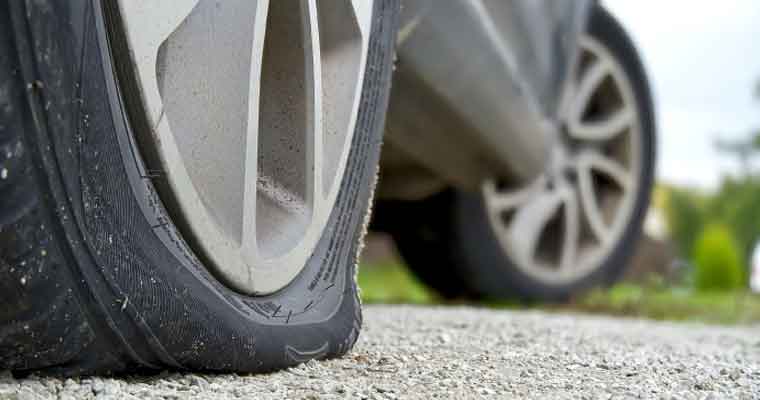Have you ever found yourself with a flat tire at the end of a long day, wondering if it’s safe to leave it until morning? We’ve all been there. In this blog post, we’ll explore whether or not it’s okay to leave it overnight and what risks you may face by doing so. So grab a cup of coffee and join us as we delve into this common question that many drivers ask themselves!
What is a flat tire?
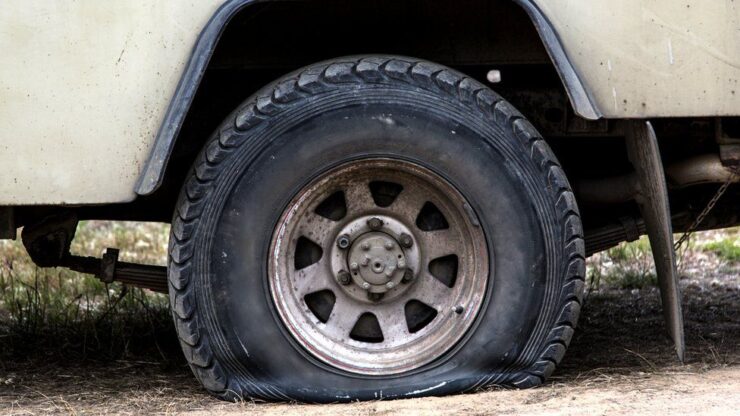
A flat tire is a tire that has lost all or most of its air pressure. Air pressure is what keeps your tires inflated and helps them to support the weight of your vehicle. When a tire goes flat, it can no longer support the weight of the vehicle and will eventually cause it to come to a stop. If you are driving on a flat tire, you may notice that the vehicle is not handling as well as it normally does. The steering may feel loose and the ride may be bumpier than usual.
How do you know if you have a flat tire?
If you have a flat tire, you will know it. You will feel the car pulling to one side, and the steering will be harder to control. The ride will be rougher, and you may hear a thumping noise. If you suspect you have it, pull over and check it as soon as possible.
Can You Leave a Flat Tire Overnight?
If you have ever been in a situation where you have a flat tire, you might be wondering whether you can leave it overnight. This is a common question that many people ask, and the answer depends on a few factors.
The short answer is yes, you can leave it overnight. There is no harm in leaving it overnight if it is safe to do so. If the tire is not causing any safety concerns, you can leave it overnight without any worries. However, if the flat tire is causing a safety issue, such as blocking a roadway or causing your vehicle to be unstable, it is best to have it fixed immediately.
What To Do If You Have a Flat Tire Overnight?
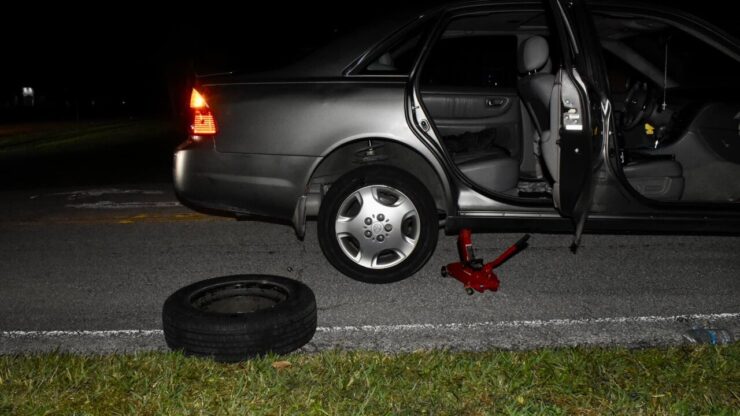
If you find yourself in a situation where you have a flat tire overnight, there are a few things you can do to ensure your safety and the safety of others.
1. Assess the Situation
The first thing to do is to assess the situation. If the flat tire is not causing any safety concerns, you can leave it overnight. However, if the tire is causing a safety issue, such as blocking a roadway or causing your vehicle to be unstable, you should have it fixed immediately.
2. Make Sure Your Vehicle is Secure
If you decide to leave your vehicle with a flat tire overnight, you should make sure it is secure. This means you should park your vehicle in a safe location and use the parking brake. If you are parked on a hill, you should turn the wheels towards the curb.
3. Plan for Repairs
Once you have assessed the situation and secured your vehicle, you should plan for repairs. This means deciding whether to fix the flat tire yourself or to have it repaired by a professional. If you are not comfortable changing a tire, it is best to have it repaired by a professional.
4. Have the Tire Repaired or Replaced
If you decide to have the tire repaired or replaced, you should do so as soon as possible. Leaving a flat tire for an extended period can cause further damage to the tire and may result in the need for a replacement.
How to change a flat tire?
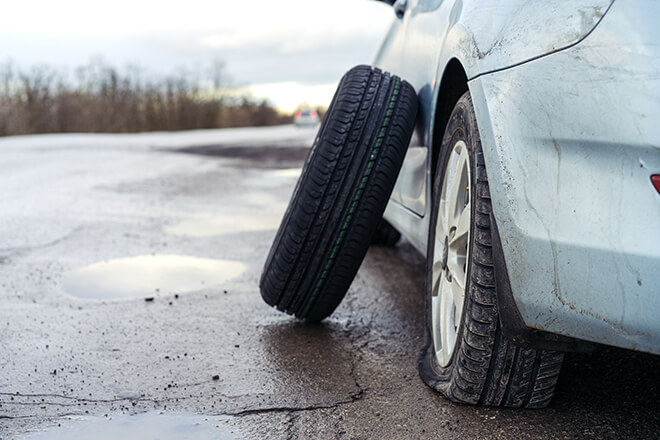
Changing a flat tire is an essential skill that every driver should know. It can happen to anyone, and being prepared for this situation can save you time, money, and potential hazards on the road. Here’s a step-by-step guide on how to do it:
Step 1: Find a Safe Location- If you have a flat tire, the first thing you should do is find a safe location to change it. Ideally, you should find a flat surface away from traffic. Avoid changing a tire on a slope or uneven surface, as it can cause the car to roll over. If you’re on the highway, move to the shoulder, or find the nearest exit to a parking lot or gas station.
Step 2: Turn on the Hazard Lights- Before you start changing the tire, turn on your hazard lights to alert other drivers that your vehicle is disabled.
Step 3: Apply the Parking Brake- Ensure the car is parked on a flat surface and apply the parking brake to prevent the car from moving.
Step 4: Use Wheel Wedges- If you have wheel wedges, place them in front of the front tires if you’re changing a rear tire or behind the rear tires if you’re changing a front tire.
Step 5: Remove the Hubcap or Wheel Cover- Using a lug wrench, remove the hubcap or wheel cover if your car has one. This will give you access to the lug nuts.
Step 6: Loosen the Lug Nuts- Using the lug wrench, loosen the lug nuts on the flat tire but don’t remove them yet. Turn them counterclockwise to loosen them, but don’t take them off completely.
Step 7: Position the Jack- Place the jack under the car, in the designated jack point, and ensure it’s in the correct position. Check your car owner’s manual for the exact location of the jack points.
Step 8: Lift the Car- Using the jack, raise the car until the flat tire is around 6 inches off the ground.
Step 9: Remove the Lug Nuts- Using the lug wrench, remove the lug nuts completely.
Step 10: Remove the Flat Tire- Remove the the tire from the car by pulling it towards you.
Step 11: Install the Spare Tire- Position the spare tire on the wheel studs and push it gently towards the car until it sits flush on the hub.
Step 12: Tighten the Lug Nuts- Tighten the lug nuts by turning them clockwise until they are hand-tight. Don’t use the wrench yet.
Step 13: Lower the Car- Using the jack, lower the car until the spare tire is resting on the ground.
Step 14: Tighten the Lug Nuts Again- Using the lug wrench, tighten the lug nuts as much as you can, in a star pattern. This ensures that the tire is tightened evenly. Tighten the nuts as much as you can but don’t over-tighten them.
Step 15: Lower the Jack- Using the jack, lower the car to the ground.
Step 16: Check the Lug Nuts- Check the lug nuts one more time to ensure they are tight.
Step 17: Replace the Hubcap or Wheel Cover- If your car has a hubcap or wheel cover, replace it.
Step 18: Inflate the Spare Tire- Check the spare tire’s pressure and inflate it if necessary.
Step 19: Store the the tire and tools- Place the your tire and the tools back in your car’s trunk.
How to prevent flat tires?
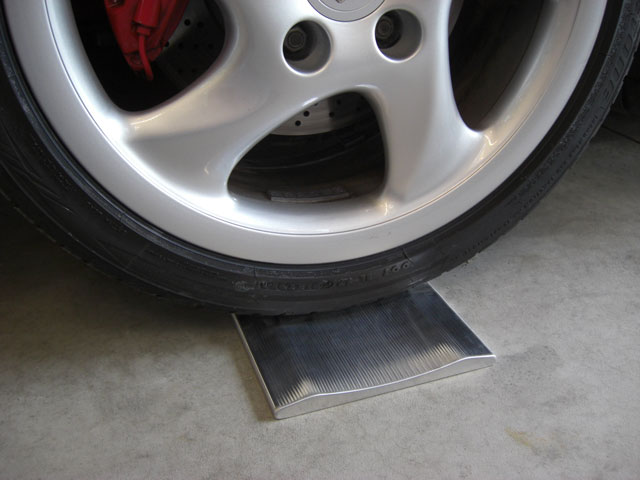
To prevent this, it is important to check your tire pressure regularly and inflate your tires to the proper pressure. It is also important to inspect your tires for any signs of wear or damage. If you see any cracks, bulges, or bald spots, it’s time to replace your tire.
Conclusion
In conclusion, leaving a flat tire overnight is not recommended as it can worsen the damage and cause other tires to become damaged from extra weight. It is also important to note that if you do choose to leave your flat tire for an extended period of time, you should make sure that the vehicle has been properly secured before doing so. If possible, try and get it fixed as soon as possible in order to minimize any potential risks or damages associated with leaving a flat tire overnight.

